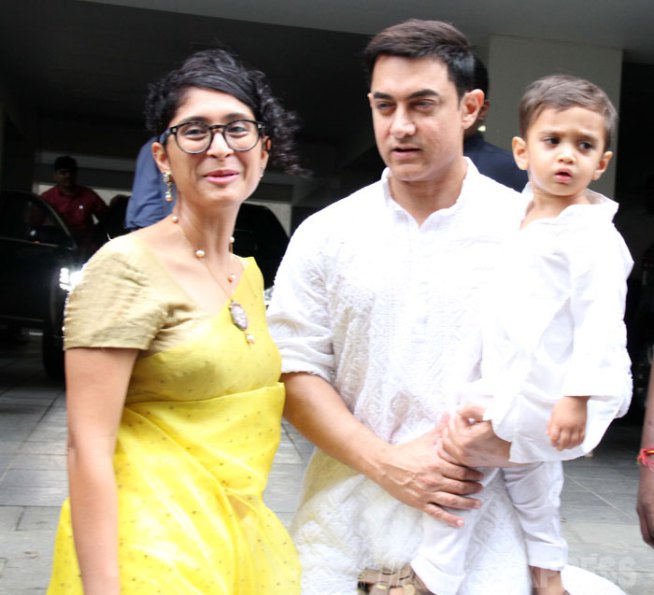‘Intolerance’ has been the hot word for the past few months. While many people thought that the debates would die out after the Bihar elections, it clearly didn’t. The debate has been whether India has become more intolerant or whether it is just a political propaganda? We all seem to have an opinion about it, and I too have mine. The answer to the heated question about rising intolerance is not a simple one. It has two parts that one needs to understand separately. Firstly we need to understand what intolerance means and whether it is good or bad, and secondly we need to put the rise or fall of intolerance in India within a proper time framework.
‘Intolerance’ can be defined as “unwillingness to accept views, beliefs, or behaviour that differ from one's own.”
Going by the definition, it can be debated if ‘intolerance’ is a good thing or a bad thing. A civilised democratic society is supposed to be tolerant and have room for difference of opinions. That is a good thing. But if you are unwilling to accept views, beliefs and behaviour of groups like ISIS, then also you are intolerant. Most will agree that such type of intolerance it is not bad. So where is the thin line between intolerance becoming good or bad? Is ban on consumption of beef bad-intolerance? Is the brutal criticism of Aamir Khan’s statement good-intolerance? There is no single answer to these questions as good and bad is a perception, which depends on the person. When we talk about rising or falling intolerance we need to understand what affects people's perception of intolerance.
Perception of ‘intolerance’ depends a lot on how media projects it. The TRP driven media can go down to lowest standards to get viewers. But, at the end of the day, it is the viewers who decide what gets them TRP. Media has, of late, projected an image of rising intolerance since BJP came to power. Let us look at some statistics reported by ‘The Hindu’. During UPA’s rule in 2013 there have been 823 incidents of communal violence while in 2014 (NDA came to power on 26th May) the number was 644. In 2015, the number was just 330 till June. What media has claimed is contrary to the statistics. Thus, the perception of intolerance and actual intolerance is not the same thing.
One thing that has changed dramatically in the last decade is the rise of social media. It has helped connect millions of Indians and gave them a platform to raise their voice at the click of a button and become a hero. Most people write post for ‘likes’ that boosts their ego and make them feel better. That is exactly what we bloggers do too. It is not a bad thing. The voices and opinions in the social media do, however, affect our perception of intolerance. Has the intolerance grown in social media? My perception is yes. The reason is the growth of the internet users in India. Also, intolerant people make more noise and thus are all over the media, even if their number is low. Bad-intolerance is when instead of debates we start insulting people having different opinions. Calling others by names like ‘feku’, ‘bhakt’, ‘sickular’, ‘pseudo-liberal’, ‘aaptards’, ‘anti-national’ etc. is a sign of immaturity. Such immaturity has filled the social media world over, not just in India. The reaction of social media to the comments of Aamir Khan is one such incident of our immaturity.
Aamir Khan’s comment came as a shock to me. Being a national icon and the brand ambassador of Incredible India my personal opinion is that he should have been more sensitive. But, people's reaction to his comment was even worse. It just proved his point. We can disagree with him and have a debate on it. We can share a few jokes and enjoy the controversy. But abusing and insulting him was immaturity. It was our show of bad-intolerance. In a democratic country, people have a right to give their opinion and feel free to express their sentiments. Did we try to understand why he said that, before we shouted in protest? The way people reacted to his movie PK and threatened him because he was a Muslim, even though the majority of the people who made the movie was a Hindu, could be a reason. From calling him a terrorist, burning his effigy, to telling him to go to Pakistan was not a sign of our tolerance. If he or his family felt threatened, they had reasons. While the actual intolerance may not have gone up, our behaviour in the social media has increased the perception of intolerance. That is alarming because it does not take much for the intolerance to spill over from social media to our real lives. The responsibility lies with us to make sure that we do not let that happen.
The second part of this post was about putting the rise or fall of intolerance in India within a proper time framework. Is intolerance rising in India? My answer is in the affirmative. Is it rising since BJP came to power? To that, my answer will be no. Communal riots are not new to India. Over the years, since we gained Independence, India calmed down. All of that changed in the 80’s. As the popularity of Congress decreased and they became insecure they started to mix politics with religion. It was an explosive combination. Muslim Women Protection of Rights on Divorce Act of 1986 passed by Rajiv Gandhi after the Shah Bano case acted as a catalyst for the Hindutva Movement. Under Rajiv’s influence, the district judge of Ayodhya ordered the opening of locks to permit worship at a small Hindu shrine within Babri Masjid on 1st February 1986. It was a dangerous move that will become the root of the violence of 1992.
Communal harmony deteriorated rapidly in the 90’s. Two separate episodes rocked India that challenged her claim of a secular nation. After the success of Advani’s rath yatra BJP went ahead with their agenda of creating Ram temple in Ayodha. They came to power in UP and the BJP CM Kalyan Singh himself was providing food and shelter for the thousands of volunteers (kar sevaks) coming to Ayodha to reclaim what they thought was the birthplace of Ram. It was 6th December 1992 when kar sevaks crawled over the mosque with axes and hammers, bringing down the century-old structure within hours. Advani himself did not expect the turn of events and later expressed his regrets publicly. But the damage was already done. What happened in Ayodha triggered a series of riots around India from Gujarat, Delhi, Madhya Pradesh, Uttar Pradesh, Karnataka to Assam, with Mumbai being the worst affected. Before the army could bring the city under control, 800 people had already died, of which two-third were Muslims. The riots were followed by a series of bomb blasts in Mumbai starting 12th March 1993. The attacks were made by the dreaded don Dawood Ibrahim as a revenge for the death of Muslims. This led to a division in Dawood’s D-Company as Chotta Rajan split away taking most of the Hindu gangsters with him.
The second episode was taking shape up north in the valley of Kashmir, once known as the paradise on earth. The separatist movement by Kashmir Liberation Front was now replaced by the shouts of Jihad by Hizb-ul-Mujahideen. Kashmiri Pandits constituted around 15% of the population in the valley before independence. They were now the targets of the Muslim terrorist organisations. On 19th January 1990 mosques of Kashmir declared that the Pandits are kafirs and the males had to leave the valley, convert to Islam, or get killed. The women had to be left behind, to be used as sex slaves by the militants. What followed was a massacre of the Pandits and sexual violence against the Hindu women. Thousands fled away from the valley as the population of the Pandits in Kashmir reduced to 3%. The Muslim terror organisations of Kashmir got support from Pakistan and ISI. After the end of Cold War all the extremists who were fighting against Russia in Afghanistan found a new ambition: liberation of Kashmir and disintegration of India.
Since then the communal polarisation has only increased. Politicians have misused that to their own advantage. The social media is giving it a platform to grow. BJP, being in power, have to handle the situation carefully. Oppositions are going to play all cards, as BJP did when they were in opposition. It is upto BJP to be mature enough and take strong actions before things get out of hand. Not just India, intolerance has been on the rise the world over. Religious conservatism is starting to gain ground once more. Comments about i-card for US Muslims from US Presidential candidate Donal Trump and still being one of the strong candidates is a proof of that. 'Islamophobia' and religious intolerance has been rising even in a liberal democracy like US. Indian politicians say a lot of stupid things, but a candidate running for the post of prime-minister and giving such a blunt statement is going to make him loose all votes. While ISIS carry out terrorist attacks and behead innocent people, such brutality is still not thinkable in India. But, as intolerance rise world-over, India will not be left behind. We need to be very careful about the future we choose for ourselves.
Intolerantly shouting and claiming that we are tolerant is not going to help us.While ISIS like brutality in not expected in India, such brutality was not unheard of in this land. Thousands were raped and brutally murdered during the partition. The Sikh and Gujarat Riots were no different. Given an opportunity, we can be as brutal as any other community in the world. Let us not give ourselves the opportunity to become brutal.























































